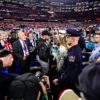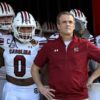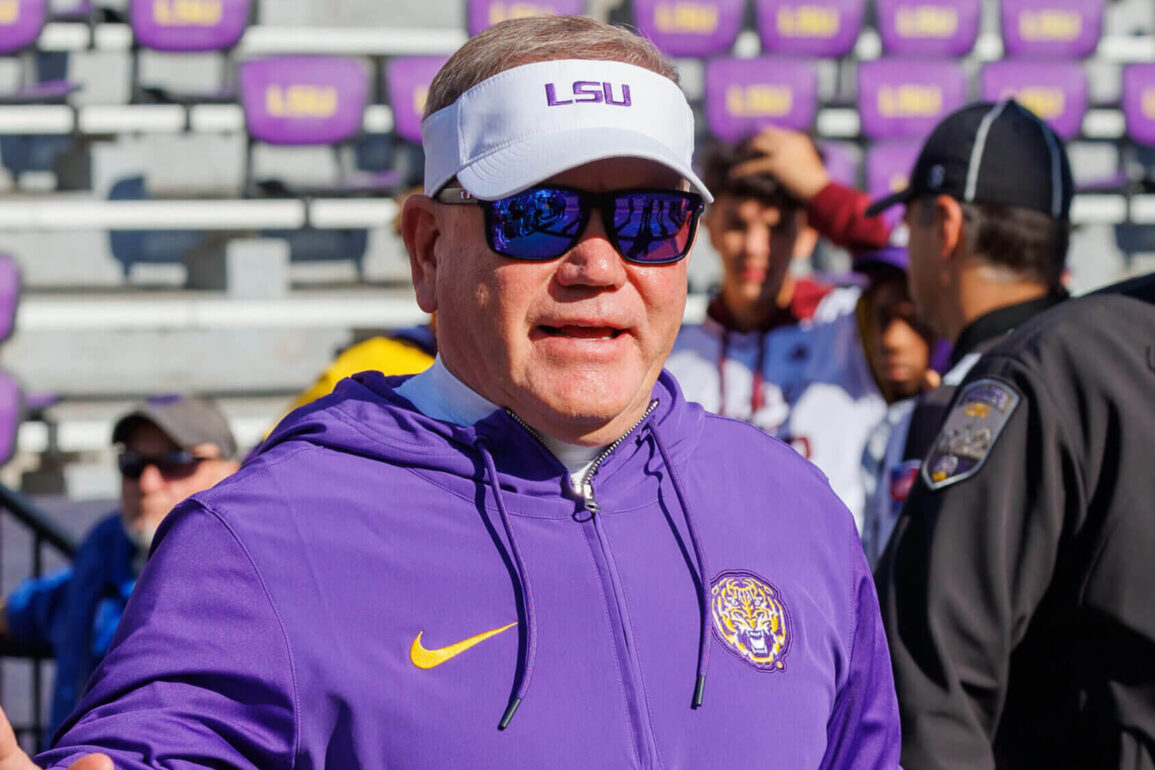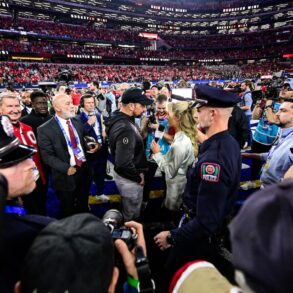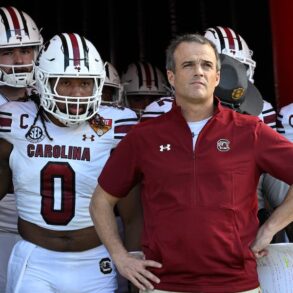The college football coaching carousel kicked into action a week ago when East Carolina and Southern Miss fired their coaches. It’s the latest date for the first midseason moves the industry has seen since 2012. The Power 4, notably, has been quiet so far.
And it’s probably not by accident. Massive changes throughout the sport — from NIL to the transfer portal to the changing recruiting calendar — are playing significant roles in the sport’s hiring and firing cycles.
Advertisement
“You really have to be conscious …” Southern Miss athletic director Jeremy McClain told reporters last Monday, a day after firing Will Hall midway through his fourth season. “With some of the new rules, some of the new opportunities that are out there, I think it just muddies the waters a little bit.”
What might we expect going forward with the coaching carousel? We reached out to current and former athletic directors, coaches and agents for some perspective.
Why haven’t we seen a head coach at a Power 4 program fired yet?
One possibility is that this cycle simply hasn’t had a lot of early-season hot-seat coaches, and those exceptions (such as Baylor’s Dave Aranda and Florida’s Billy Napier) have done enough to stick around so far.
Another possibility is the transfer portal. School administrators have wised up after seeing players head for the exits in droves after a coach is fired. LSU had only 39 scholarship players available for its bowl game in 2021 after it fired Ed Orgeron two weeks before Halloween. The Tigers weren’t the only program to see an exodus of players once a coaching change was made.
That season, five more power-conference programs (USC, Texas Tech, TCU, Virginia Tech and Florida) fired their coaches before the end of the regular season for on-field performance. A year later, six (Nebraska, Arizona State, Georgia Tech, Colorado, Wisconsin and Auburn) made in-season changes. Last season, only Texas A&M, Mississippi State and Syracuse made a move — and none before Nov. 12.
Midseason opt-outs are already a concern. Because players can preserve a redshirt year as long as they don’t appear in more than four games, some have sat out over things such as NIL disputes (like UNLV quarterback Matthew Sluka) and playing time disagreements. A coaching change just gives players another reason to shut down.
Advertisement
“They’re gonna say, ‘Eh, I’m not playing anymore …’” former Florida State athletic director David Coburn said. “I think that a lot of ADs are trying to be very, very careful about that.”
Miami’s pursuit of Mario Cristobal in 2021 might provide the ideal blueprint for how a P4 school should operate going forward. The Hurricanes courted Cristobal from Oregon as Manny Diaz finished up a 7-5 season. Once they landed Cristobal, Diaz was fired. There was not an overwhelming exodus of players — because the coaching change wasn’t made until after the season — and Miami finished with five wins in its last six regular-season games.
Earlier this month, the NCAA shortened the transfer window from 45 to 30 days in football and basketball and moved the three-day early signing period for high school recruits up from the third to the first Wednesday in December. The first transfer period window opens the day after the 12-team College Football Playoff field is announced and remains open for 20 days, from Dec. 9-28. First-round Playoff games are played Dec. 20-21. The second transfer window is open from April 16-25.
Players can transfer for a lot of reasons, but one thing programs and NIL collectives do not want to do is throw away money. They want players to finish the season on the field, not the sidelines.
“We can talk about recruiting dates moving up and Playoff expansion, but that ain’t got diddly poo to do with why nobody has been fired yet at the Power 4 level,” said a prominent coaching agent who was granted anonymity so he could speak candidly. “If they fire the coach, they still have to pay the players NIL through Jan. 1, even if those guys are opting out. It’s 90 percent economics, 10 percent optics. The ability to pay your players has changed the way everything is looked at with this. What needs to happen is multi-year contracts (for players).”
Advertisement
Will Playoff expansion affect who schools will consider for head coaching positions?
When Florida State fired Willie Taggart after nine games in 2019, Coburn said it would be “a significant advantage” to start the search during the season before other jobs open up. It was. The Seminoles met with their eventual choice, Mike Norvell, during Memphis’ November open date and announced his hiring on Dec. 8, the day after the Tigers won the American Athletic Conference Championship Game.
If the same scenario unfolded this year, the December signing period would have occurred before the conference title game, not after it, and Memphis would have been in the Playoff as the top Group of 5 champion.
Could Norvell and the Seminoles have had an agreement in place to allow him to come on board after the Playoff run? Would Florida State have been willing to punt on a recruiting class to make that happen? Would Norvell have even wanted to leave?
“All those dynamics have changed now,” Coburn said.
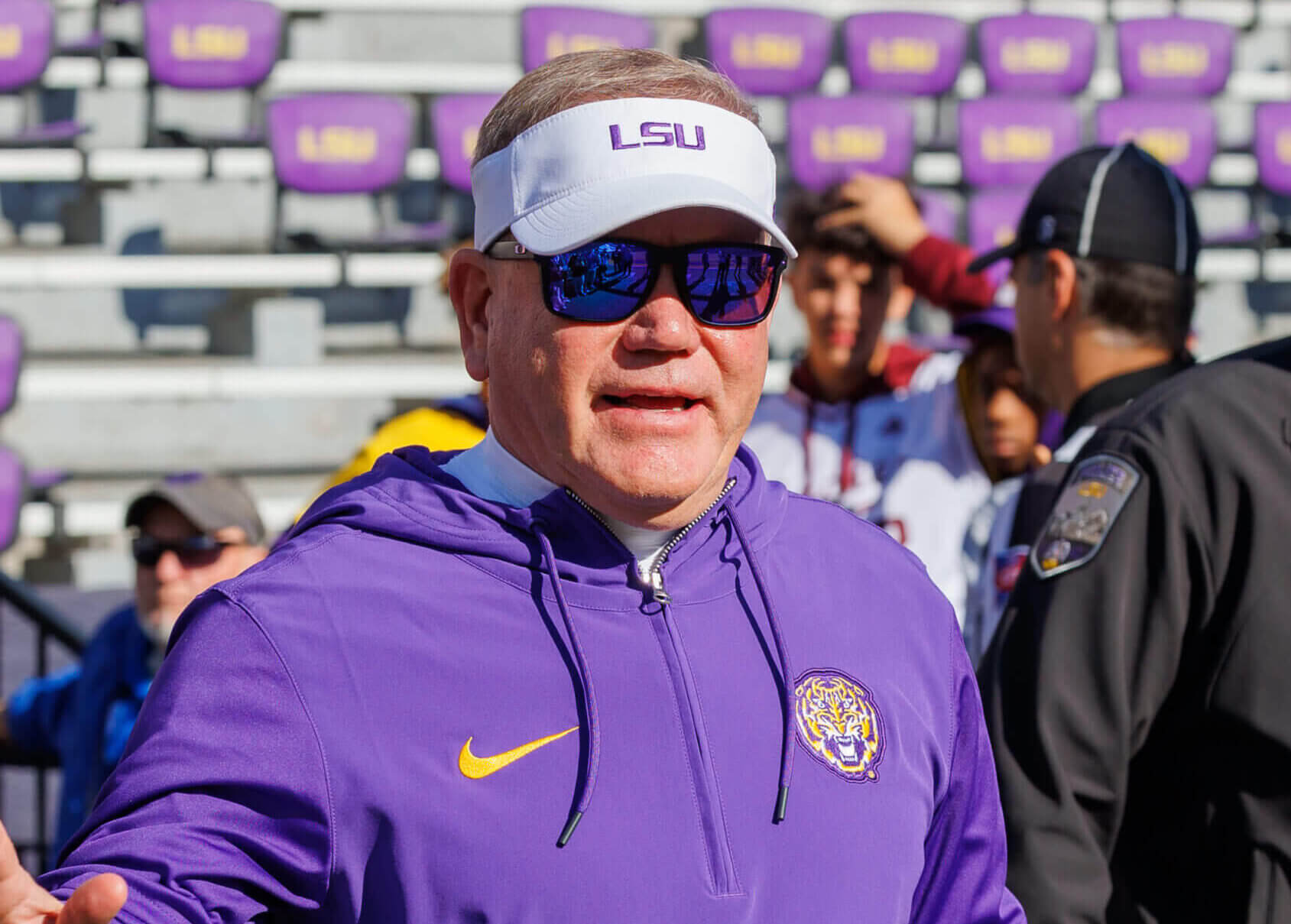
Would Brian Kelly be at LSU if the 12-team Playoff existed in 2021 while he was still at Notre Dame? (Stephen Lew / Imagn Images)
In the past three seasons, only one head coach would have faced a similar situation: LSU’s Brian Kelly, whose 2021 Notre Dame team would have made a 12-team field. But others could in the future if a program wanted to lure James Franklin from Penn State or Lane Kiffin from Ole Miss while their respective teams were on the bubble or in the field. Perhaps a school has to go to Plan B or Plan C.
Coordinators at prominent programs seem more likely to be the targets in the new landscape. Last year, 20 coaching hires were made from the final weekend of the regular season (Nov. 25) through the end of December. Among the hires were three assistants who would have been coaching in a 12-team Playoff — Penn State defensive coordinator Manny Diaz (Duke), Georgia defensive backs coach Fran Brown (Syracuse) and Texas co-defensive coordinator and linebackers coach Jeff Choate (Nevada).
All three immediately left their teams to begin work at their new jobs. Choate, though, returned to coach Texas against Washington in the CFP semifinal. That’s nothing new. ESPN analyst and former Florida and Mississippi State head coach Dan Mullen did it when he was the Gators offensive coordinator under Urban Meyer and was hired to coach the Bulldogs in December 2008. He coached Florida in the national championship game.
Advertisement
It’s different, though, being a head coach and being courted by other programs.
“(As a head coach) I never would talk to a school until after the regular season ends or after the conference championship game,” Mullen said. “If you’re playing in the Playoff, there’s a three-week window between the end of the regular season and the Playoff. If I’m gonna listen to a call, I would take those calls then.
“The tricky part now is high school kids are making decisions by Dec. 4 instead of three weeks into December, and the portal is open. It’ll be interesting to see some of these dilemmas if they do come up. College football would help itself greatly if it fixed the calendar a little bit.”
The agent believes P4 schools will not wait on a head coach of a Playoff team to make up his mind about leaving unless they know it’s definitely going to happen regardless of how far the coach advances in the postseason.
“I just don’t think a head coach will leave a Playoff team while you’re still playing,” the agent said. “But taking a swing at somebody you don’t absolutely love when you can get somebody that you know is a slam dunk, a good administrator is going to wait to do that.”
Will any schools restructure the hierarchy in their program?
One Group of 5 athletic director said recently that he’s waiting to see which FBS school becomes the first to model itself after the NFL, hiring a general manager or president of football operations ahead of a coach so the school can have someone looking after the roster during the coaching transition. If that happens, the AD surmised, it might be at the G5 level first where coaching salaries are much lower than at P4 schools.
That might sound good in theory, but in reality …
“I can’t see a time in my lifetime where the most important person in a college football program isn’t the head coach,” the agent said. “The simple fact of the matter is it doesn’t matter who you are or where you are — if you’re making the most money, you’re the boss.”
Advertisement
Mullen agreed. He can’t envision a situation in which the head coach doesn’t wield all the power.
“If a Miami Dolphins player gets arrested, the media is going after the GM or the owner,” he said. “If a Miami Hurricanes player gets arrested, they’re pointing the finger at Mario Cristobal. It’s where the responsibility lies in the overall, end-all, be-all state.”
How does NIL factor in?
Money is more important than ever as players are getting paid through NIL and schools are preparing to share revenue as soon as next year. That makes fan/donor support another evolving force.
Not surprisingly, NIL business can suffer when a team struggles. That’s what South Florida’s Fowler Ave Collective learned during the Bulls’ 1-11 season in 2022 before Jeff Scott was fired with three games remaining.
“It was very hard for them to see the vision,” collective co-founder Corey Staniscia said.
If it’s hard for fans and donors to see the vision, they become reluctant to invest.
“No one wants to buy a loser,” said Peter Boehme, who runs Southern Miss’ To The Top Collective.
To be clear, fans and boosters have long influenced coaching moves, and the calculus is different at the G5 and P4 levels. Paying an eight-figure buyout can be more cost-effective than watching income from donations, ticket sales, parking and concessions plummet.
NIL, however, adds another wrinkle. Boehme said Southern Miss’ football struggles led to some members canceling their donations or switching their support to another sport. His collective has enough other revenue streams, such as sponsorships and events, that it doesn’t have to rely solely on fans’ regular contributions.
But could dwindling donations — or the threat of future withheld contributions — be enough to trigger a coaching change elsewhere?
We all know the answer to that question.
(Illustration: Meech Robinson / The Athletic; Photos: Andy Lyons, Maddie Meyer, C. Morgan Engel / Getty Images)
This post was originally published on this site be sure to check out more of their content.


